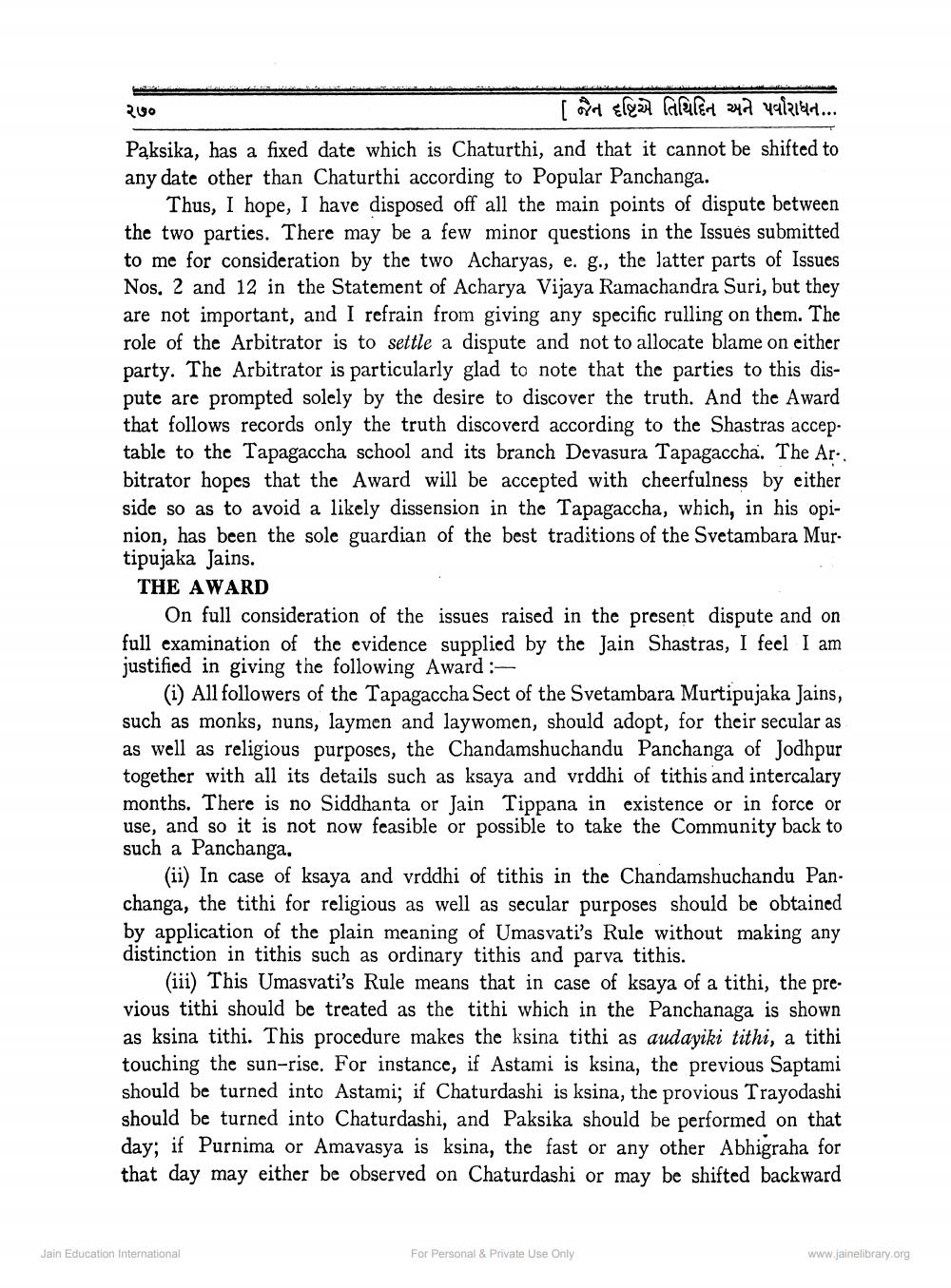________________
200
T
HE
Caleler 242 yaizied...
Paksika, has a fixed date which is Chaturthi, and that it cannot be shifted to any date other than Chaturthi according to Popular Panchanga.
Thus, I hope, I have disposed off all the main points of dispute between the two parties. There may be a few minor questions in the Issues submitted to me for consideration by the two Acharyas, e. g., the latter parts of Issues Nos. 2 and 12 in the Statement of Acharya Vijaya Ramachandra Suri, but they are not important, and I refrain from giving any specific rulling on them. The role of the Arbitrator is to settle a dispute and not to allocate blame on either party. The Arbitrator is particularly glad to note that the parties to this dispute are prompted solely by the desire to discover the truth. And the Award that follows records only the truth discoverd according to the Shastras acceptable to the Tapagaccha school and its branch Devasura Tapagaccha. The Ar.. bitrator hopes that the Award will be accepted with cheerfulness by either side so as to avoid a likely dissension in the Tapagaccha, which, in his opinion, has been the sole guardian of the best traditions of the Svetambara Murtipujaka Jains. THE AWARD
On full consideration of the issues raised in the present dispute and on full examination of the evidence supplied by the Jain Shastras, I feel I am justified in giving the following Award :
(i) All followers of the Tapagaccha Sect of the Svetambara Murtipujaka Jains, such as monks, nuns, laymen and laywomen, should adopt, for their secular as as well as religious purposes, the Chandamshuchandu Panchanga of Jodhpur together with all its details such as ksaya and vrddhi of tithis and intercalary months. There is no Siddhanta or Jain Tippana in existence or in force or use, and so it is not now feasible or possible to take the Community back to such a Panchanga.
(ii) In case of ksaya and vrddhi of tithis in the Chandamshuchandu Panchanga, the tithi for religious as well as secular purposes should be obtained by application of the plain meaning of Umasvati's Rule without making any distinction in tithis such as ordinary tithis and parva tithis.
(iii) This Umasvati's Rule means that in case of ksaya of a tithi, the previous tithi should be treated as the tithi which in the Panchanaga is shown as ksina tithi. This procedure makes the ksina tithi as audayiki tithi, a tithi touching the sun-rise. For instance, if Astami is ksina, the previous Saptami should be turned into Astami; if Chaturdashi is ksina, the provious Trayodashi should be turned into Chaturdashi, and Paksika should be performed on that day; if Purnima or Amavasya is ksina, the fast or any other Abhigraha for that day may either be observed on Chaturdashi or may be shifted backward
Jain Education International
For Personal & Private Use Only
www.jainelibrary.org




